Digital Press Kit
Press Photos
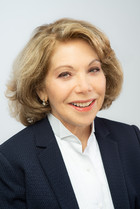 | Victoria Bond Press PhotoVictoria Bond leads a multifaceted career as composer, conductor, lecturer, and artistic director of Cutting Edge Concerts. Her compositions have been praised by The New York Times as "powerful, stylistically varied and technically demanding," and her conducting has been called “impassioned” by the Wall Street Journal and “full of energy and fervor” by The New York Times.
Bond’s opera, Clara, based on the life of composer and pianist Clara Schumann, premiered at the Berlin Philharmonic Easter Festival in Baden-Baden, Germany in 2019. Recent compositions include: Anne Franks's Tree, commissioned and premiered by The Indianapolis Chamber Orchestra; Ruth Bader Ginsburg: In Tune with Justice, commissioned and premiered by the Stockton Symphony in California; The Adventures of Gulliver, commissioned by American Opera Projects through a commissioning grant from Opera America; Blue and Green Music commissioned by Chamber Music America for the Cassatt String Quartet; Illuminations on Byzantine Chant commissioned by the University of Nebraska and Soli Deo Gloria for pianist Paul Barnes; The Voices of Air, commissioned by The University of Missouri UMKC Conservatory for trombonist JoDee Davis; The Miracle of Light, a Hanukkah opera, commissioned by The Young Peoples Chorus of NYC and premiered by Chamber Opera Chicago; The Reluctant Moses, commissioned by The Choral Society of the Hamptons; That Music Always Round Me, commissioned by The Manhattan Choral Ensemble.
Bond’s recordings include: Blue and Green Music (Albany Records, 2022); Illumination (Albany Records, 2021); Instruments of Revelation (Naxos American Classics, 2019); Soul of a Nation: Portraits of Presidential Character (Albany Records, 2018); The Voices of Air (Albany Records 2021);Yes (Albany Records 2003); Live from Shanghai (Protone Records 1995). Her music has also been recorded on the Koch International, GEGA, Protone, and Family Classic labels, and her works are published by G. Schirmer, Theodore Presser, C.F. Peters, Subito Music and Protone Music, and is distributed by Theodore Front Musical Literature.
Performances of Bond’s compositions include: Ruth Bader Ginsburg: In Tune with Justice (Stockton Symphony, CA); Blue and Green Music (Cassatt String Quartet, various locations in the USA and the Nightingale Quartet, Copenhagen, Denmark); Nowhereland (Opera America, NYC); Sorrow's Springs are the Same (The United Nations); Clara, (The Berlin Philharmonic Easter Festival, Baden-Baden, Germany); Thinking Like a Mountain, (The Broadway Bach Ensemble, NYC); Mrs. President (Anchorage Opera); The Reluctant Moses, (The Choral Society of the Hamptons); How Lovely is Thy Dwelling Place (St. John the Divine and Temple Emanuel, NYC)The Voice of Water (Cutting Edge Concerts, NYC).
Ms. Bond has composed eight operas, six ballets, two piano concertos and orchestral, chamber, choral and keyboard compositions. She has been commissioned by ensembles including the Houston and Shanghai Symphony Orchestras, Cleveland and Indianapolis Chamber Orchestras, Michigan Philharmonic, Cassatt String Quartet, Los Angeles County Museum of Art, Soli Deo Gloria Music Foundation, American Opera Projects, Young Peoples’ Chorus of New York City, Manhattan Choral Ensemble, Choral Society of the Hamptons, American Ballet Theater, Pennsylvania Ballet, and Jacob’s Pillow Dance Festival. Her compositions have been performed by the Dallas Symphony, New York City Opera, Saint Paul Chamber Orchestra, Anchorage Opera, Irish National Orchestra (RTE), Shanghai Symphony and members of the New York Philharmonic and Chicago Symphony, among others.
Victoria Bond is principal guest conductor of Chamber Opera, Chicago, a position she has held since 2008. Following her graduation from The Juilliard School, she was selected by Andre Previn for the Exxon/Arts Endowment Conductor position with the Pittsburgh Symphony. She has served as assistant conductor of New York City Opera under Beverly Sills, and was music director and conductor of the Roanoke Symphony Orchestra, artistic director of Harrisburg Opera, Opera Roanoke, and Bel Canto Opera Company in New York, and artistic advisor of The Wuhan Symphony in China.
Ms. Bond has conducted the Houston Symphony in the premiere of her work, Ringing, and has guest conducted the Honolulu, Buffalo, Richmond, Louisville, Albany, Anchorage, and Dallas symphony orchestras; Cleveland and St. Paul chamber orchestras; Opera Carolina; Festival of Contemporary Music in Santos, Brazil; Radio Telefis Eirann in Dublin, Ireland; Orchestra Sinfonica Guido d’Arezzo in Italy, Center for Contemporary Opera in New York; the Shanghai, Hunan, and Wuhan symphony orchestras and Beijing Central Opera in China. She has served as principal guest conductor for Ray Charles in concerts throughout the world, including performances and recording of Quincy Jones’ Black Requiem.
Inspired by Pierre Boulez's series, "Perspective Encounters,” Victoria Bond founded Cutting Edge Concerts New Music Festival in 1998. Called "a full-throttle commitment to contemporary music" by Chamber Music America, CEC has presented and premiered works by over 300 composers including Philip Glass, William Bolcom, Aaron Jay Kernis, Tania Leon, Joan Tower, David Del Tredici, Eric Salzman and Bond herself.
In addition to her composing and performing activities, Dr. Bond is also passionate about sharing her knowledge of music with others. She has been a frequent lecturer for the Metropolitan Opera Guild, including courses on Wagner’s Ring and Verdi's operas. She also gave pre-performance lectures for the New York Philharmonic and interviewed composers appearing on the concerts. She has taught at The Julliard School, New York University, Nyack College, and at the Conductor’s Institute of South Carolina.
Ms. Bond is the recipient of the Victor Herbert Award, the American Academy of Arts and Letters’ Walter Hinrichsen Award, the Perry F. Kendig Award and the Miriam Gideon Prize. She has been awarded honorary doctorates from Hollins and Roanoke Colleges, and Washington and Lee University, and was voted Woman of the Year, Virginia in 1990 and 1991.
Victoria Bond is the first woman awarded a doctorate in orchestral conducting from the Juilliard School where she also received her Master’s degree. She holds a Bachelor’s degree from the University of Southern California. Her teachers include Ingolf Dahl and Roger Sessions (composition); William Vennard (voice); Jean Morel, James Conlon, Sixteen Ehrling, Leonard Slatkin, and Herbert Blomstedt (conducting). While a student at Juilliard, Ms. Bond also worked with some of the most eminent names in classical music, including Herbert von Karajan, Pierre Boulez, Aaron Copland, and Mstislav Rostropovich. Photo Credit: Photographer: Anna Ablogina File Size: 1,381,540 bytes (1892 x 2834 pixels) |
 | Press PhotoFile Size: 444,851 bytes (1460 x 2048 pixels) |
 | Press PhotoFile Size: 432,158 bytes (1536 x 2048 pixels) |
 | Victoria BondFile Size: 112,657 bytes (768 x 960 pixels) |
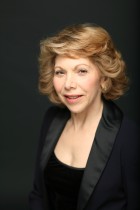 | Victoria BondFile Size: 1,062,680 bytes (1664 x 2496 pixels) |
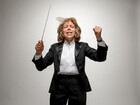 | Press PhotoFile Size: 321,134 bytes (2000 x 1500 pixels) |
 | Victoria BondFile Size: 1,007,513 bytes (2563 x 3859 pixels) |
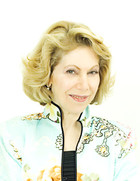 | Press PhotoFile Size: 28,601 bytes (270 x 350 pixels) |
 | Victoria BondFile Size: 538,963 bytes (3859 x 2563 pixels) |
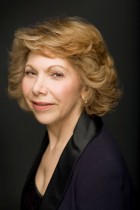 | Victoria BondFile Size: 663,142 bytes (2330 x 3494 pixels) |
 | Victoria Bond Press PhotoPhoto Credit: Photographer: Anna Ablogina File Size: 3,770,683 bytes (4016 x 6016 pixels) |